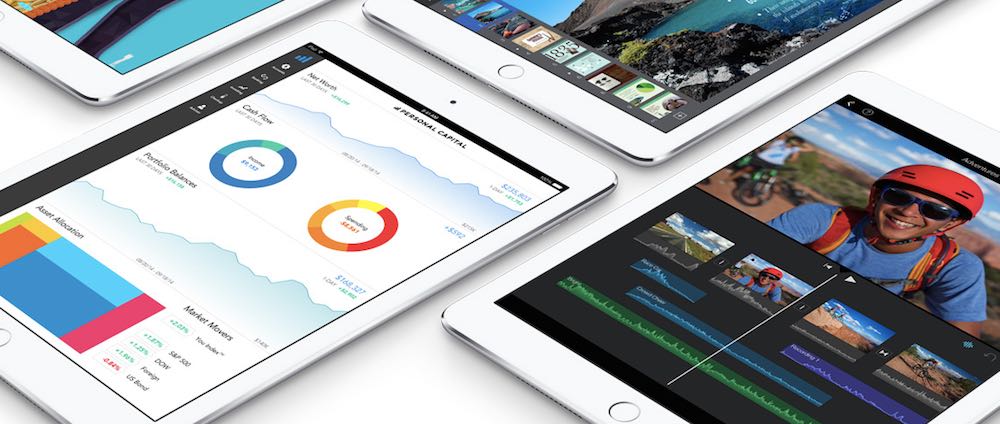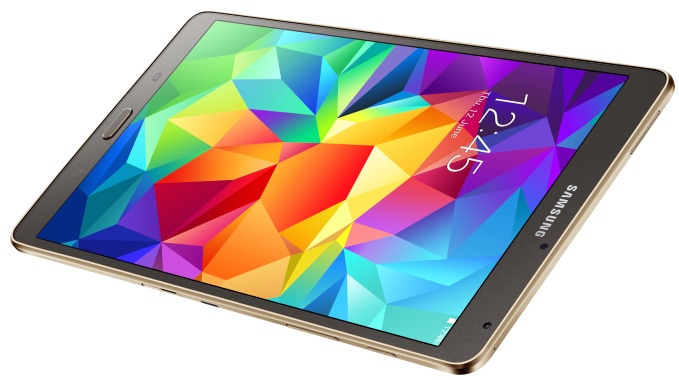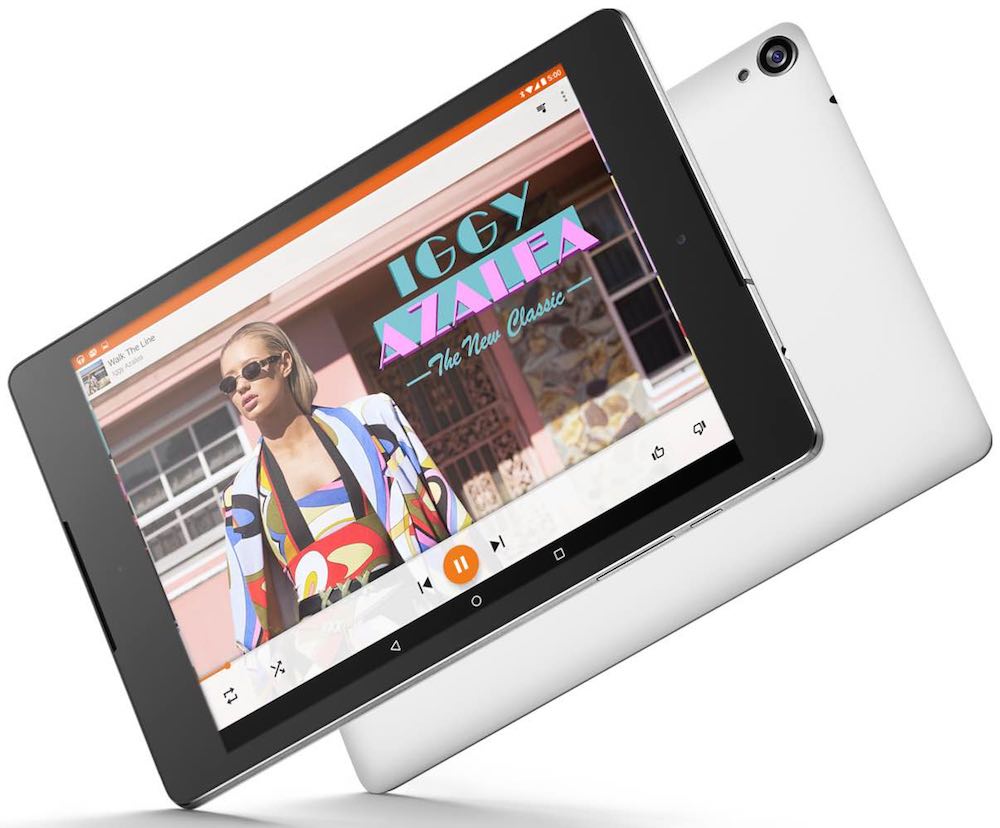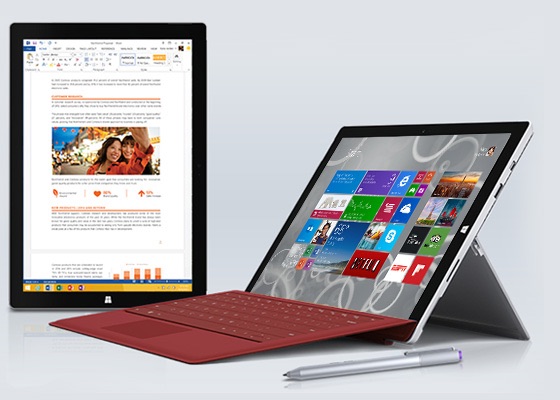
I’ve posted a number of articles about tablets in recent weeks. There’s a reason for that: tablets are one of the most popular and sought-after gifts. I have the opportunity tor hands-on time with many of these devices throughout the year and if If I can help someone to make an informed choice between the dozens (of not hundreds) of tablets currently available, I’m happy to do so. I’ve already touched on topics like the best tablet for a specific task or top choices within a price range. This time around, it’s my picks for the best tablets of 2014.
I don’t want to get into an iOS vs. Android vs. Windows flame war. All three platforms are represented in my list, but not just to make sure each has a presence —every tablet mentioned is here because of its merits. I’m also not going to rank the tablets (see my reference to platform flame wars once again), but rest assured that any one of the four will serve you well.
Samsung released a ton of tablets in 2014, many of which could have made this list.
However one that stands out in my time using it is the 8.4-inch Samsung Galaxy Tab S. Although it’s a solid all-round performer, the feature that makes this tablet so impressive is its superb display.

Samsung used a SuperAMOLED panel which means extremely high contrast and excellent colour reproduction —this tablet really is something to look at. Blacks are deeper and colour accuracy hits 94%, which is unheard of on a tablet. The display uses adaptive technology that automatically adjusts the picture so it’s optimized for the current task. And at 2560 x 1600 resolution (that’s over 4 million pixels in an 8.4-inch display), everything is razor-sharp.
When it comes to watching videos or reviewing digital photos, the Galaxy Tab S is tough to beat.
The high pixel count and high-powered Octa-core CPU also allow this tablet to operate in a multi-window mode, so you can have two apps open and running simultaneously.
I also like the size of the 8.4-inch Galaxy Tab S. The 10.5-inch version is impressive too, but this one is very portable (it’s just 6.6 mm thick and weighs only 294 g) and less expensive, giving it the nod.
If there’s a no-brainer choice on any list of the top tablets for 2014, it’s Apple’s iPad Air 2. The latest flagship from the company that kicked off the tablet revolution is easily its best offering to date.
The display remains at the same Retina resolution as the original iPad Air (2048 x 1536), but Apple combined three separate components into a single laminated display. As a result, air gaps between components are eliminated for sharper content with greater contrast and the tablet is even thinner than before: 2014’s thinnest full-size model at just 6.1 mm.
Instead of the A8 chip used in the iPhone 6 and 6 Plus, Apple went with the even more powerful A8X CPU and for the first time ever, an Apple mobile device has 2GB of RAM at its disposal. Compared to the already speedy first generation iPad Air, the iPad Air 2 has a 40% performance boost and a whopping 2.5x the graphics processing power.

Can you say games?
Apple has also added a Touch ID sensor for biometric security and online shopping, boosted the primary camera’s capabilities to make this tablet a serious shooter and added the iPhone’s popular gold case option.
When Microsoft first released the Surface Pro tablets, they failed to entirely win me over. It was easy to see the appeal of being able to run Windows 8 Pro, including the same Windows software you have installed on your PC, but the original Surface Pro tablets used a 16:9 aspect ratio that made the 10.6-inch display seem unbalanced when held in portrait mode —the way you would if holding it to read e-mail, for example.
With the 3rd generation Microsoft got things just about perfect for someone looking for a large tablet experience, one that’s ideal for productivity while also covering off the kind of all purpose stuff we throw at these devices.
The Surface Pro 3 offers an even bigger display than the Surface Pro 2 (12-inches) and ups the resolution. That narrow form factor is gone, replaced by a more useful 3:2 aspect ratio. The new Surface Pro has 30 percent more screen real estate for displaying content.
You’ll still find a powerful CPU inside, the same Core 13, Core i5 or Core i7 that powers notebook PCs. And the Surface Pro 3 still makes use of the very cool (and laptop-esque) magnetic Touch Cover —one of the best optional tablet add-ons ever.
Even though Microsoft bulked up the Surface Pro 3’s display, it somehow simultaneously slimmed down the Magnesium-skinned tablet, going from 13.46 mm thick to 9.1 mm and trimming the weight from 907 g to 800 g.
The downside to the Surface Pro 3 —besides its size (if a huge tablet isn’t your thing)— is the relative lack of apps compared to iOS or Android. However, the Surface Pro 3’s ability to run Windows software more than makes up for this shortcoming.
The Nexus 9 makes a great choice for someone who wants a high quality tablet that’s more than capable of handling anything from watching video to browsing the web or playing games.

There are tablets with better displays, faster CPUs and higher resolution cameras. But the Nexus 9 is no slouch in any of these areas, offering a 281 ppi screen, fast Nvidia Tegra K1 CPU and 8MP primary camera with LED flash. It also supports the latest 801.11ac Wi-Fi, boasts dual front-facing speakers and offers 9+ hour battery life.
Then there’s one of this tablet’s key advantages. As a Nexus device, it’s an Android showcase. It’s the first tablet to receive the new Android 5.0 (Lollipop), the UI is pure Android with no third-party UI, and you can count on it getting future Android updates.
In short, it delivers everything you need a tablet to do, it does so at a price point that’s lower than many other flagship tablets and its hardware and Nexus pedigree ensure it will continue to be an excellent Android experience into the future as well as today.
So those are my picks for the four best tablets of 2014. Stay tuned for the next post in this tablet series, where I list the top tablets as picked by Best Buy customers.

 Microsoft Surface Pro 3
Microsoft Surface Pro 3

